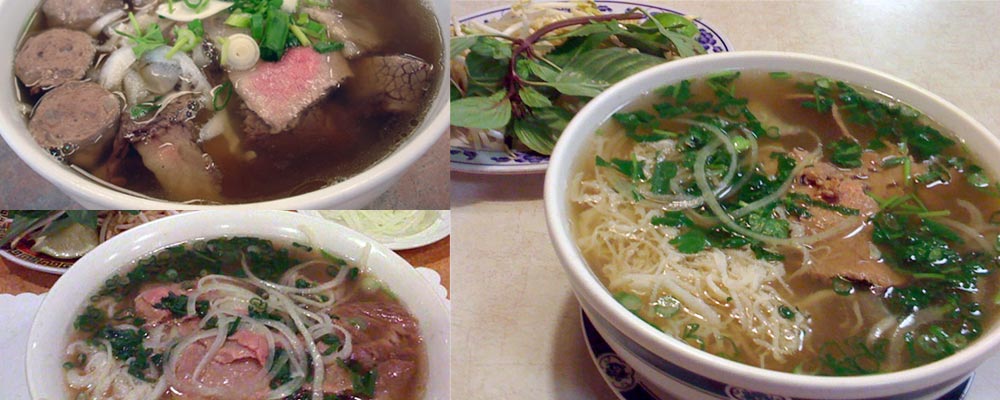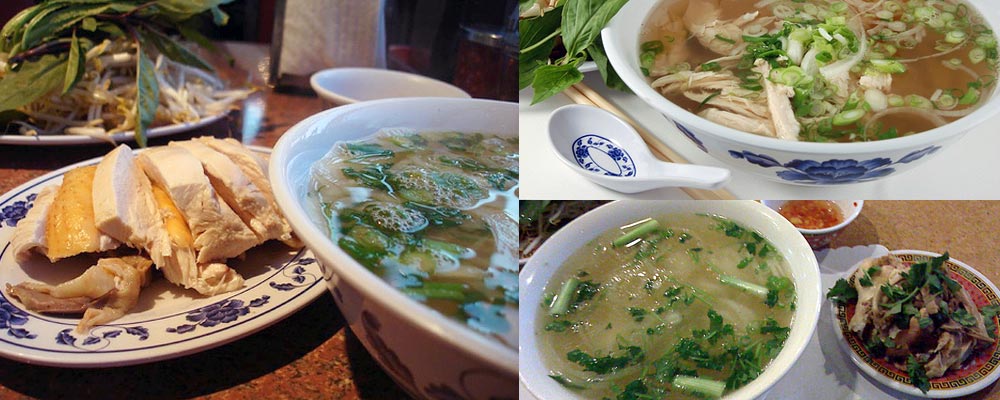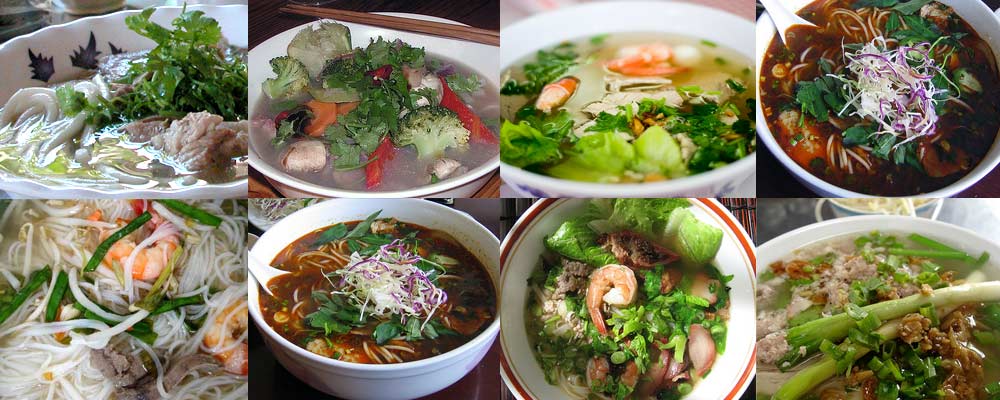Here’s one of the most important statements I’ll ever make:
That’s right. This simple phrase will alert non-Vietnamese to the possibility that what they’re looking at may not be pho at all. If you remember just this phrase, plus a couple of tips I’ll give at the end of this post, then you’ll stay out of pho hell for sure, plus you’ll be able to identify pho or otherwise a different type of noodle dish like a pro, or a true Vietnamese, or a pho connoisseur, whichever applies. Let’s look at a few examples below, but don’t look too long because you’ll get nauseated knowing you can’t have a bowl right now.Not all Vietnamese-noodle-in-hot-broth-in-a-bowl dishes are Phở.
Below are pho bo and pho ga (beef pho and chicken pho).
These are not pho. They're hu tieu varieties (same noodle as pho, light broth), and bun bo Hue (round noodle, dark broth.)
So here are a few general, but very accurate, tips to identify if it’s pho or not (with exceptions as noted below):
- If you don’t have beef or chicken, then it’s not pho.
- If you have fish, shrimp, pork, octopus, goat, etc., then it’s not pho.
- Pho can be ordered without meats, or with meats on the side (e.g., rare beef, chicken or beef balls) in which case you’ll need to validate by some other ways.
- Pho chay (vegetarian pho) which is normally served at Buddhist temples, vegetarian restaurants, or at many regular pho places. Pho chay looks and tastes somewhat different from the real pho, but it is considered pho regardless.
- If you’re at a restaurant and the menu specifically says such pho dish is a specially created dish, or otherwise acknowledging in some way that it’s not a regular pho, because they have meats other than beef or chicken in it, then conditions 1. and 2. above can be relaxed. The idea here is a chef has every right to be creative with his/her food, and if the chef makes a clear distinction of what is authentic pho and what falls under the creative license arena, then it is totally acceptable.
What’s been your own experience on pho-looking pho and non-pho looking pho? (hope that makes sense). Share with us your opinions.









0 comments:
Post a Comment